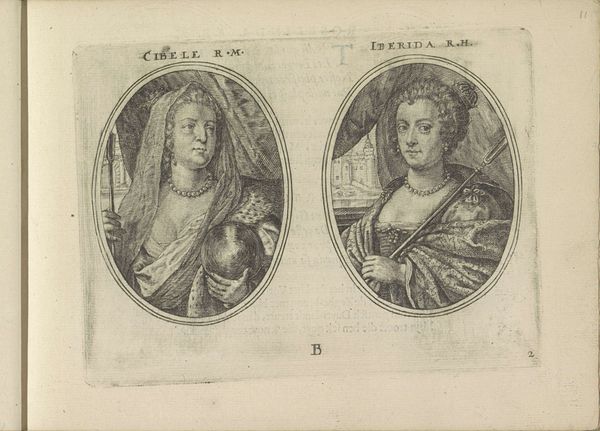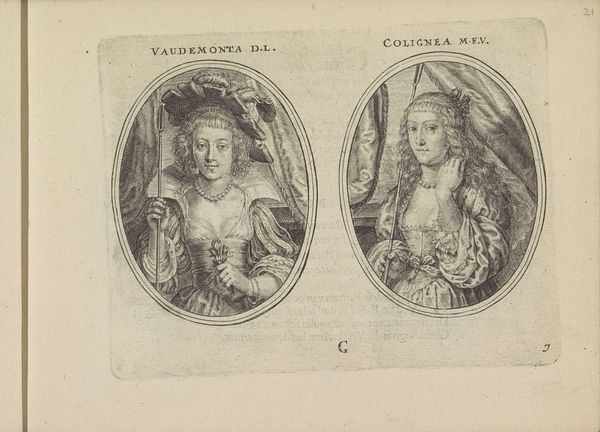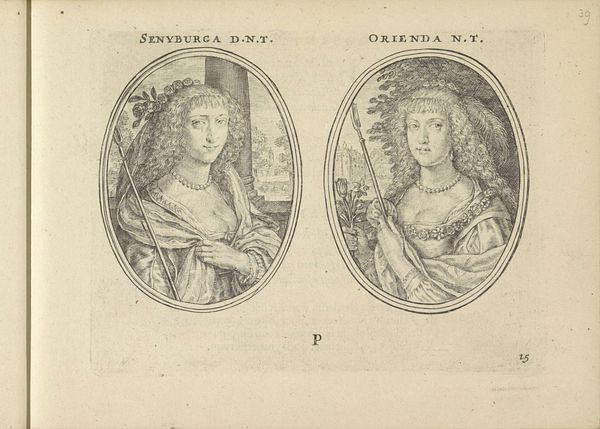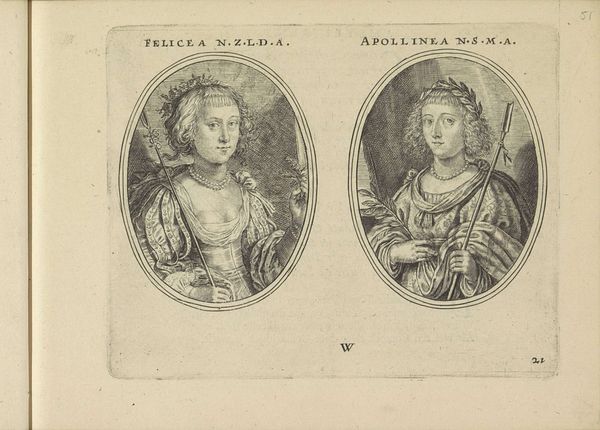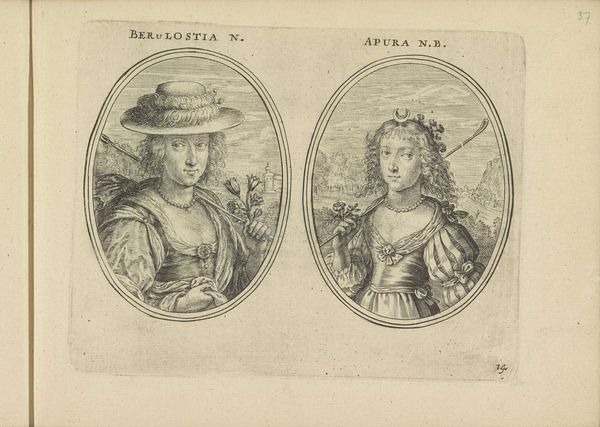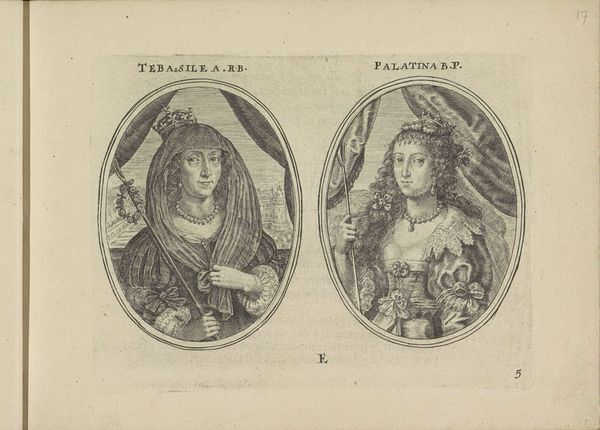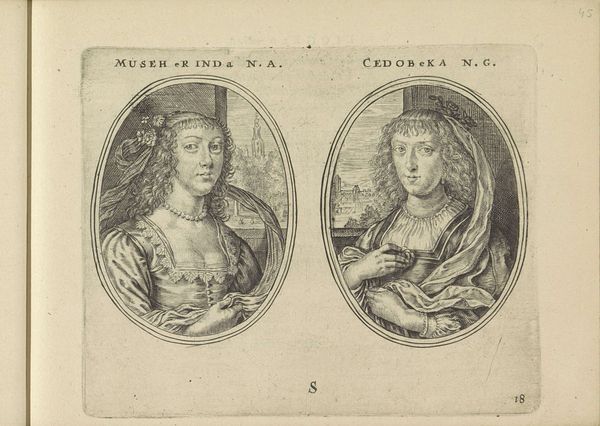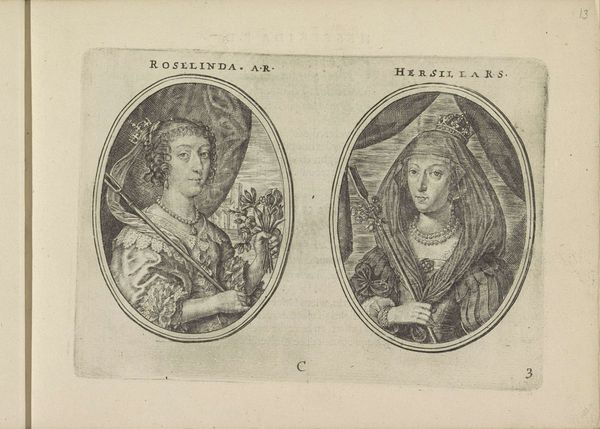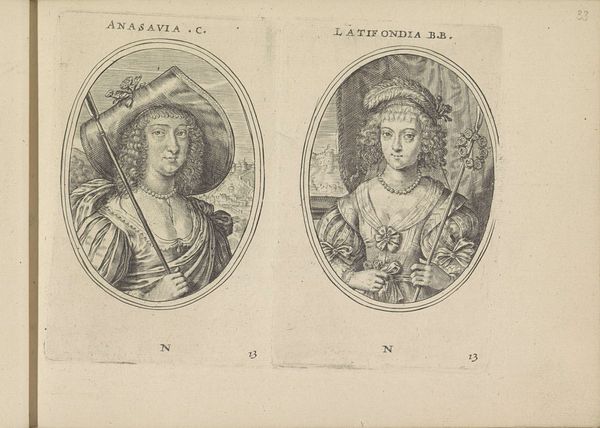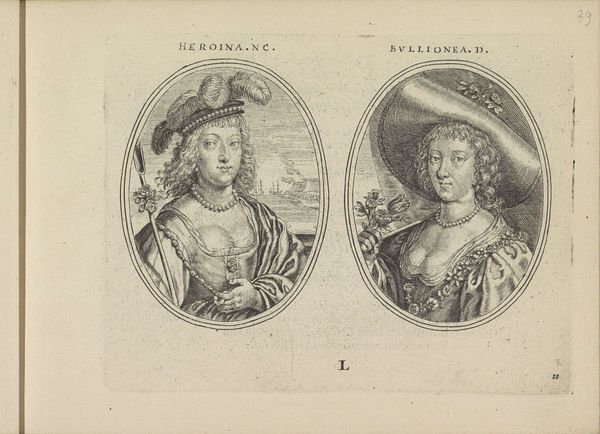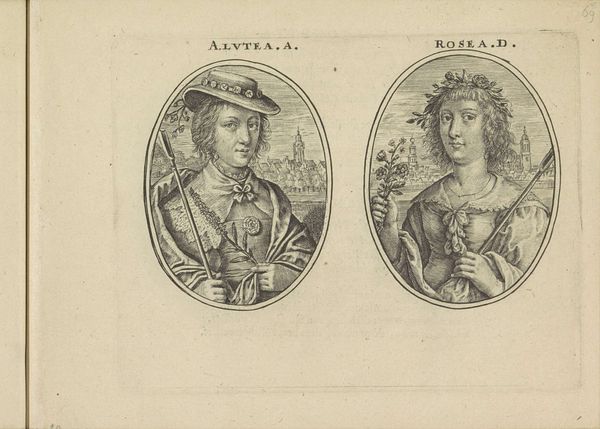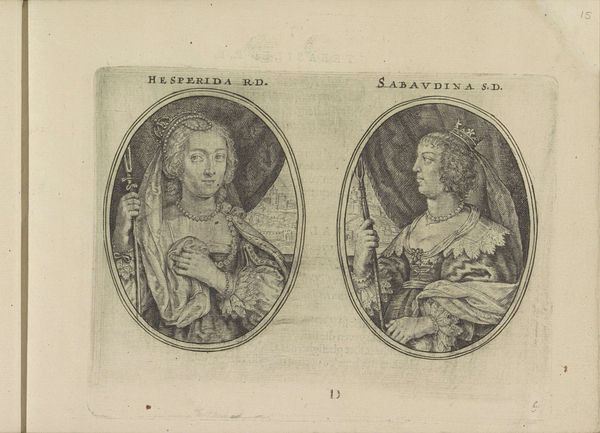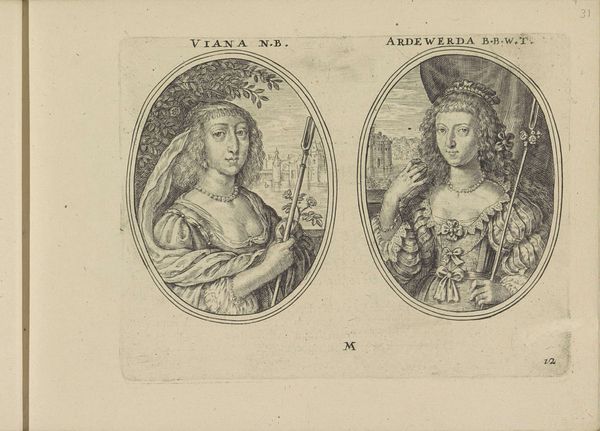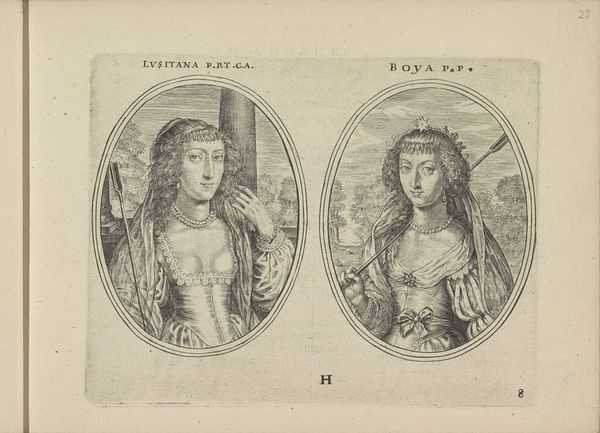
Portretten van Barbara van den Broeck en een onbekende vrouw, beiden als herderin 1640
0:00
0:00
print, engraving
#
baroque
# print
#
old engraving style
#
personal sketchbook
#
history-painting
#
engraving
Dimensions: height 110 mm, width 159 mm
Copyright: Rijks Museum: Open Domain
Curator: This print from around 1640 by Crispijn van de Passe the Younger depicts two women, Barbara van den Broeck and an unidentified woman, both portrayed as shepherdesses. Editor: My first impression is one of studied contrast. Despite the mirroring oval frames, the sitters evoke different moods. One seems reserved, almost cautious, while the other possesses a rather forward, even bold gaze. Curator: That difference is key. Consider how female identity was performed in this era. Representing them as shepherdesses—idealized rural figures—speaks volumes about contemporary constructions of femininity and perhaps even social commentary on their roles. This use of the "shepherdess" persona could represent a type of freedom women were gaining, an ability to imagine new spaces for themselves, literally in pastures. Editor: Yes, the symbols tell a story. The shepherd's crook is pretty evident, but I want to consider what isn't obvious at first sight: the pearls, the luxurious fabrics, and elaborate hairstyles contradict this pastoral scene. Do they reflect back to the artifice of courtly life? Curator: Exactly! This tension exposes how elite identities borrowed imagery to reflect onto themselves imagined and desired societal roles, even while upholding class structures. The contrast suggests competing ideals; they want the simpler life, but maintain their position. Editor: And the compositions themselves function as a symbolic mirror! Each detail appears consciously chosen for the narrative being shaped. This creates a visual dialogue around status, representation, and perception, prompting us to ask "who are we looking at? what message does that image send to us"? Curator: And who do these woman want us to think they are? These prints circulated, defining those roles within very specific cultural, patriarchal, and economic contexts, reinforcing or challenging expected societal behavior and gender performance. They would’ve likely reached many female viewers, offering ways to model themselves, consciously or unconsciously. Editor: Looking closer, it’s fascinating how details carry symbolic weight. What feels like a small piece by Crispijn reveals big ideas and issues tied to representation and image production. Curator: Absolutely. Studying artworks such as these helps us to consider the relationship between subject, artist, viewer, and historical setting, inviting us to reassess ideas surrounding artifice and reality and its relation to identity and personhood in contemporary society. Editor: Indeed, reflecting on the symbolic significance embedded within seemingly simple portraits opens fascinating insights into cultural perceptions and ideals.
Comments
No comments
Be the first to comment and join the conversation on the ultimate creative platform.
